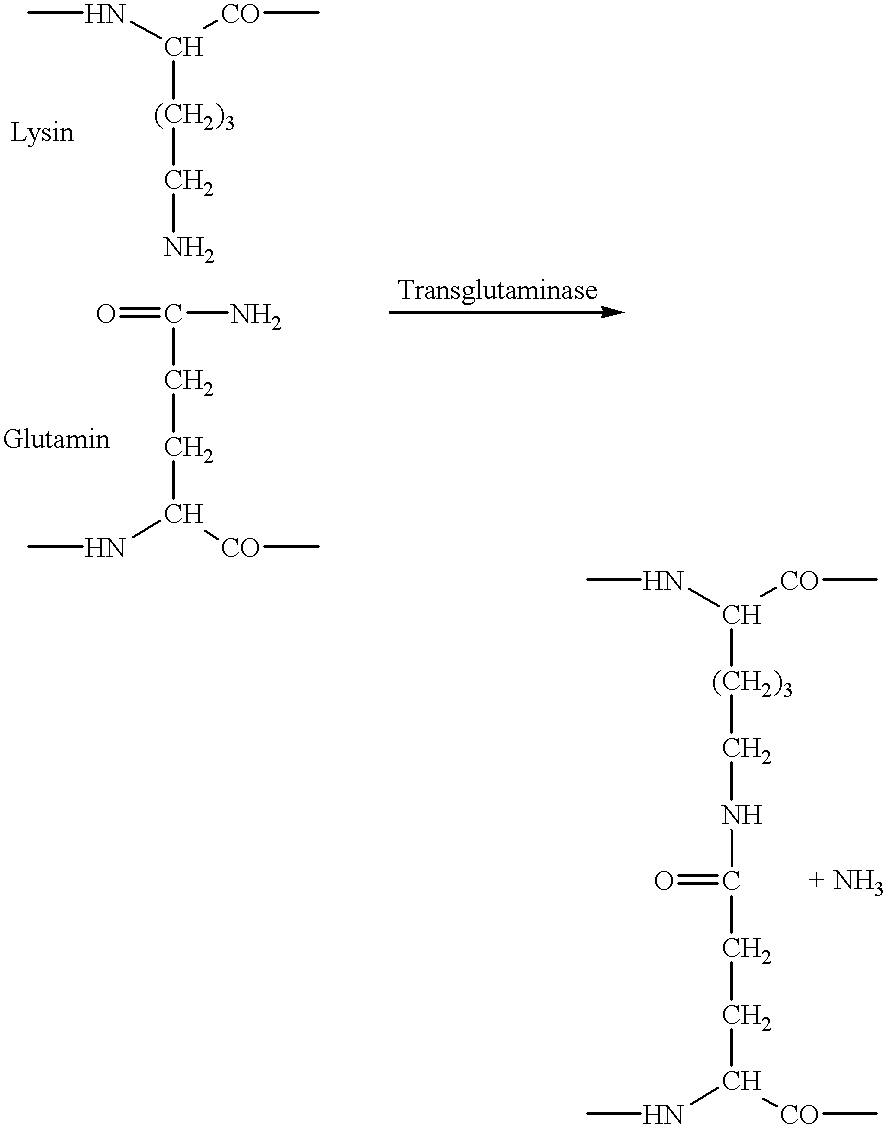Method for the modification of protein structure in finish shaped feed pellets, balls or the like in order to achieve shape stability, and feed mass made in accordance with the method
- Summary
- Abstract
- Description
- Claims
- Application Information
AI Technical Summary
Benefits of technology
Problems solved by technology
Method used
Image
Examples
example 2
In this case another source of protein (soya) was used, whose real protein level is about 20% lower than that of fish meal. The feedstuff was prepared largely as indicated in Example 1.
500 g soya meal (Hamlet) and 700 ml water were mixed to the formation of a dough, which was formed into pellets and dried for about 40 minutes. As in example 1, a wear test was carried out. After the test had been completed, the remaining whole pellets were subjected to a new wear test, this time with four metal balls and at 150 revolutions.
25 g transglutaminase product containing 125 mg transglutaminase and 15 g sodium caseinate was stirred into 700 ml water at about 40.degree. C. The solution was added to 500 g soya meal flour, blended and formed as indicated in example 1, incubated at 40.degree. C. for 60 minutes and dried for about 60 minutes.
The invention also comprises other enzymes that catalyse the formation of covalent bonds between amino acids that form part of the protein chains in the raw ...
PUM
 Login to View More
Login to View More Abstract
Description
Claims
Application Information
 Login to View More
Login to View More - R&D Engineer
- R&D Manager
- IP Professional
- Industry Leading Data Capabilities
- Powerful AI technology
- Patent DNA Extraction
Browse by: Latest US Patents, China's latest patents, Technical Efficacy Thesaurus, Application Domain, Technology Topic, Popular Technical Reports.
© 2024 PatSnap. All rights reserved.Legal|Privacy policy|Modern Slavery Act Transparency Statement|Sitemap|About US| Contact US: help@patsnap.com








